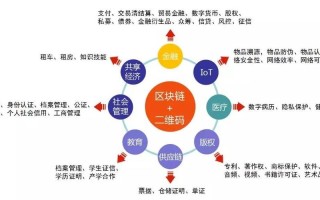Exploring the Potential of Blockchain Consortium Chains in the Cloud
Blockchain technology has rapidly gained attention across industries for its potential to revolutionize various aspects of business operations, including transparency, security, and efficiency. One of the latest developments in the blockchain space is the emergence of consortium chains, also known as alliance or federated chains, which are designed to cater to the specific needs of multiple organizations working together towards common goals. When combined with cloud computing, these consortium chains unlock even greater possibilities for collaboration, scalability, and accessibility. Let's delve deeper into the concept of blockchain consortium chains in the cloud and explore their potential.
Blockchain consortium chains are permissioned networks where multiple organizations come together to share a distributed ledger. Unlike public blockchains like Bitcoin or Ethereum, consortium chains are not open to the public; instead, they are operated by a predefined group of participants. This allows for greater control over access, governance, and privacy, making them suitable for enterprise use cases.
Key features of blockchain consortium chains include:
- Permissioned Access: Participants are vetted and granted specific permissions to join the network and interact with the blockchain.
- Shared Governance: Governance rules are established among the participating organizations to govern the operation of the consortium chain.
- Enhanced Performance: Consortium chains can achieve higher transaction throughput and lower latency compared to public blockchains, thanks to fewer nodes and consensus mechanisms tailored to the needs of the participants.
- Privacy and Confidentiality: Consortium chains enable selective disclosure of information, allowing participants to maintain confidentiality while still sharing data with authorized parties.
Cloud computing has become ubiquitous in modern IT infrastructure, offering scalability, flexibility, and costefficiency. By integrating blockchain consortium chains with cloud platforms, organizations can leverage the benefits of both technologies to drive innovation and streamline their operations.
Here are some ways in which consortium chains can be integrated with cloud computing:
- Scalability: Cloud infrastructure provides ondemand resources, allowing consortium chains to scale according to the needs of the participants. As transaction volumes grow or new members join the network, the cloud can dynamically allocate computing power and storage resources to support the increased workload.
- High Availability: Cloud providers offer redundant infrastructure and data replication across multiple geographic regions, ensuring high availability and fault tolerance for consortium chains. In the event of hardware failures or network outages, the blockchain network can seamlessly failover to backup systems deployed on the cloud.
- Cost Optimization: By leveraging cloud services, organizations can reduce the upfront costs associated with deploying and managing blockchain infrastructure. Cloud platforms offer payasyougo pricing models, allowing consortium participants to pay only for the resources they consume, thereby optimizing costs and improving financial efficiency.
- Interoperability: Cloudbased consortium chains can easily integrate with other cloudnative services and applications, facilitating interoperability and data exchange across different systems. This interoperability is essential for building comprehensive solutions that span multiple domains and ecosystems.
The combination of blockchain consortium chains and cloud computing opens up a wide range of use cases and applications across various industries:
- Supply Chain Management: Consortium chains can be used to track and trace products throughout the supply chain, ensuring transparency, authenticity, and compliance. Cloud integration enables realtime data sharing and analytics, enhancing supply chain visibility and efficiency.
- Healthcare: Healthcare consortium chains can securely store and share patient records, medical histories, and treatment protocols among healthcare providers, insurers, and patients. Cloudbased solutions facilitate interoperability and data exchange while maintaining patient privacy and confidentiality.
- Finance and Banking: Financial institutions can leverage consortium chains to streamline crossborder payments, trade finance, and identity verification processes. Cloud integration enables faster transaction settlement, lower operational costs, and improved regulatory compliance.
- Government and Public Sector: Governments can use consortium chains to digitize and automate public services, such as land registries, voting systems, and identity management. Cloudbased solutions offer scalability, resilience, and costeffectiveness for delivering citizencentric services.

While the combination of blockchain consortium chains and cloud computing offers significant benefits, there are also challenges and considerations that organizations need to address:
- Security: Protecting sensitive data and preventing unauthorized access is paramount in consortium chains. Organizations must implement robust security measures, such as encryption, access controls, and identity management, to mitigate cybersecurity risks.
- Regulatory Compliance: Compliance requirements vary across industries and jurisdictions, posing challenges for blockchain deployments. Organizations must ensure that their consortium chains adhere to relevant regulations and standards, such as GDPR, HIPAA, and PCIDSS.
- Interoperability: Integrating consortium chains with existing systems and legacy infrastructure can be complex due to interoperability issues. Organizations should adopt industry standards and protocols to facilitate seamless integration and data exchange.
- Governance and Consortia Management: Establishing governance frameworks and consensus mechanisms among consortium participants is essential for effective decisionmaking and dispute resolution. Organizations must define clear roles, responsibilities, and incentive structures to ensure the longterm sustainability of the consortium.
Blockchain consortium chains represent a promising paradigm for collaborative innovation, enabling organizations to share data and processes in a secure, transparent, and efficient manner. By integrating consortium chains with cloud computing, organizations can harness the power of both technologies to drive digital transformation and create new value propositions. However, successful adoption requires careful planning, robust governance, and continuous collaboration among stakeholders. With the right strategy and execution, blockchain consortium chains in the cloud have the potential to reshape industries and create a more interconnected and inclusive economy.
标签: 区块链和云平台的关系 区块链联盟链 联盟链是什么区块链 区块链云平台是什么 区块链联盟链公有链私有链







